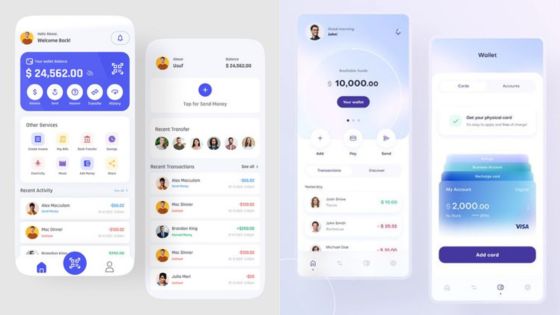Packaging design plays a crucial role in shaping a brand’s identity and connecting with customers. Whether it’s through bold colors, clever graphics, or sleek minimalism, effective packaging design can grab attention and encourage people to choose one product over another. The visual appeal and functionality of packaging can never be underestimated, as it often provides the first impression of a product.


From innovative techniques to playful themes, creative packaging can compel consumers to engage with a brand. Utilizing patterns, simple layouts, and imaginative concepts can create an unforgettable experience. Incorporating elements like practicality and user-friendliness ensures that the packaging is not only visually striking but also genuinely useful. Taking inspiration from industry leaders, designers can stay ahead of trends while crafting unique solutions that resonate with their target audience.
Capturing the essence of a brand and packaging it in an appealing way requires skill and insight. By considering the needs and preferences of the target market, designers can create packaging that boosts a product’s appeal and market presence. Combining aesthetic, functionality, and brand messaging in emerging packaging design trends in 2025 can elevate products to new heights.
Key Takeaways
- Effective packaging grabs attention and encourages product choice.
- Practicality and user-friendliness enhance overall design.
- Combining aesthetics with brand messaging is key to success.
- The Importance of Packaging Design
Packaging design is vital in creating first impressions, driving marketing efforts, and fostering strong brand identity. It can attract attention, influence purchase decisions, and reinforce the brand’s message.
First Impressions and Brand Recognition
First impressions matter. When potential customers see a product, the packaging design is the first thing they notice.


Good design stands out on store shelves, making the product more appealing. Colors, typography, and images can make a product attractive and memorable. This recognition is crucial for building a relationship with customers.
Unique and consistent packaging helps a brand become recognizable. When people recognize a brand, they are more likely to trust it and choose it again. Thus, investing in distinctive design can boost a product’s visibility and appeal.
The Role of Packaging in Marketing and Sales
Packaging is more than just a container; it is a powerful marketing tool. It communicates important information about the product and can persuade potential customers to make a purchase.


Eye-catching design can draw attention to a product, even in a crowded market. Use of innovative shapes and materials can make a product look premium or environmentally friendly, appealing to different customer preferences.
Effective packaging can also include features like QR codes or special offers, using smart tools such as a qr codes generator which can engage customers further and drive sales. Thus, smart designs play a crucial role in marketing and can directly impact the sales figures of a product.
How Packaging Contributes to Brand Identity
Brand identity is the overall image of a brand in the minds of customers. Packaging design is a key element here. It can convey a brand’s values, style, and promises.


Consistent design elements like logos, colors, and fonts across all packaging can reinforce the brand’s message. This consistency helps in building trust and loyalty among customers.
Additionally, storytelling through packaging can create an emotional connection with customers. Whether a brand is luxurious, eco-friendly, or innovative, its packaging design should reflect these qualities. This alignment strengthens the brand identity and helps it stand out in a competitive market.
Elements of Effective Packaging Design


Effective packaging design plays a crucial role in attracting customers and ensuring product functionality. Key elements include the use of appealing color schemes, engaging typography, and thoughtful shapes and functionality.
Color Schemes and Aesthetics
Color is a powerful tool in packaging design. It can convey a brand’s identity, evoke emotions, and attract attention. Utilizing vibrant colors can make a product stand out on the shelf, while more subdued palettes might convey sophistication and elegance.


Contrasting colors can highlight key information or features, making it easier for consumers to read. Consistency in color schemes across a product line helps reinforce brand recognition. Brands often use colors that align with their overall aesthetic and target audience—yellows for energy and youth, blues for trust and calmness, and so on.
Typography and Graphic Design
Typography is essential for conveying a product’s message clearly and attractively. The choice of font style, size, and color can influence the perceived quality of the product. Bold, readable fonts can ensure vital information is easily accessible, while creative typography can distinguish a brand from its competitors.


Graphic elements such as logos, illustrations, and patterns also play a significant role. These visual components should align with the brand’s identity and be instantly recognizable. Minimalistic designs can provide a clean and modern look, whereas detailed and ornate graphics may suggest a premium or luxury product.
Shape, Form, and Functionality
The shape and form of packaging are not only about aesthetics but also functionality. A unique shape can make a product memorable and encourage purchase, but it must also be practical. For instance, a bottle should be easy to hold and pour from, while a box should protect its contents effectively.
Innovative shapes can differentiate a product and offer additional value, such as reusability or easier storage. Functional aspects like resealable features, ergonomic designs, and material choices impact the overall user experience. Sustainable materials and designs that reduce waste are increasingly important to consumers and can enhance a brand’s reputation.
The Creative Process in Packaging

Designing packaging involves multiple stages, each essential for transforming an idea into a tangible product. Key steps include developing concepts, using illustrations and imagery, and iterating designs for innovation.
From Concept to Final Product
The design process starts with brainstorming ideas. Designers need to understand the product, brand values, and target audience. This initial concept phase involves sketches and rough drafts.
Creating mock-ups helps visualize the design. These prototypes can range from simple paper demos to detailed 3D models.
Collaboration is crucial. Designers often work with marketing teams, product managers, and manufacturers to refine the design. Feedback cycles allow for adjustments and refinements.
Final products undergo test packaging to ensure durability, functionality, and visual appeal. They must meet industry standards and resonate with consumers.
The Importance of Illustrations and Imagery
Illustrations and imagery play a critical role in packaging. They can convey brand identity, evoke emotions, and attract customers.
Fine art, like realistic portraits or abstract paintings, can inspire unique designs. Some designers use fluid art techniques for eye-catching textures.


Illustrations should align with the brand message. For example, a sophisticated brand might use elegant, minimalist graphics. In contrast, a playful brand might opt for bold, colorful images.
Images can also demonstrate product usage or benefits. For instance, a washing detergent package might show clean clothes to signify its effectiveness.
Design Iteration and Innovation
Iteration is essential for innovative packaging. Initial designs are rarely perfect. Multiple iterations allow for improvements and refinements.
Feedback from focus groups can highlight strengths and weaknesses. This helps in making necessary adjustments to appeal to the target market.


Innovation often comes from experimenting with materials, shapes, and functionalities. Designers may incorporate sustainable materials or interactive elements.
Staying updated with design trends helps keep packaging fresh and relevant. Inspiration can come from various sources, including competitors, art, and technology.
Testing and evaluating each iteration ensure functionality and aesthetics are balanced. This continuous improvement process leads to the best possible final product.
Packaging Trends and Inspiration

Packaging design continues to evolve, driven by creativity and the need to connect with consumers. Current trends highlight visual uniqueness, functional aesthetics, and eco-friendly materials.
Emerging Trends in Packaging Design
One of the emerging trends in 2023 is product visuals with abstract, geometric, and simple shapes. Packaging designers are experimenting with breaking traditional boundaries and incorporating innovative shapes and patterns.


Ecstatic colors are another trend making waves. These vibrant and bold colors attract the eyes and stand out on the shelves. Brands like Casa Centinela’s RTD cocktails are examples where these colors are skillfully used.
Clear paneling and cut-out details add both functional and creative elements. They allow consumers to peek inside the package, enhancing the buying experience. This trend is seen in products like rice packaging and soap boxes.
Sources of Inspiration for Designers
Packaging designers draw inspiration from various sources. Art and fashion trends often lead the way, providing fresh and contemporary ideas. Following these trends helps designers stay relevant and trendy.


Another source of inspiration comes from cultural elements. By incorporating traditional symbols, colors, and patterns, designers give a unique touch to the packaging. Casa Centinela’s tequila packaging is a prime example, reflecting Mexican heritage.
Designers also get inspired by functional needs. Considering the utility and convenience of packaging, they create designs that are not only visually appealing but also user-friendly. This is evident in packaging like kitchen spice jars and innovative tea packets.
Showcasing Successful Packaging Examples
Several successful packaging examples showcase the effective use of these trends. The can design by BenTō demonstrates the mix of functional design with aesthetic appeal.


Mix Drinks packaging by JustOneShyHuman uses ecstatic colors to create a vibrant identity. This packaging design catches attention and conveys the energy of the brand.
Blukki’s rice packaging uses clear paneling effectively, merging practicality with design. Consumers can see the product, which builds trust and enhances the customer’s experience.
By studying these examples, designers can gain valuable insights into what makes packaging successful and appealing. These inspirations and trends are essential for anyone looking to create impactful and memorable packaging designs.
Targeting the Right Audience

To create effective packaging design, it’s crucial to understand your customers’ preferences and offer solutions that meet their needs. This ensures products connect with the intended audience, driving sales and brand loyalty.
Understanding Customer Preferences
Knowing your target audience involves more than just age or income. Dive into their interests, lifestyle habits, and purchasing behaviors. For example, food packaging for a health-conscious audience should be eco-friendly and easy to recycle. Juice boxes aimed at kids could feature bright colors and fun shapes to attract attention.
Key considerations:
- Demographics: Age, gender, income
- Lifestyle: Interests, shopping habits
- Preferences: Eco-friendliness, ease of use
Custom Packaging Solutions
Custom packaging helps to align your product with customer expectations. Brands can use custom packaging tape, labels, and boxes to create a unique look that stands out. For instance, a brand selling organic juice might use clear, minimalist designs to highlight the product’s freshness and purity.
Examples:
- Custom Packaging Tape: Adds brand identity
- Thank You Roll Labels: Personal touch for a memorable experience
- Circle Roll Labels: Useful for brand visibility
These solutions not only enhance the product’s appeal but also build a strong connection with the audience, increasing the likelihood of repeat purchases.
Designing for Competitive Advantage

In today’s crowded market, businesses need to capture attention and create a lasting impression. Effective packaging design plays a crucial role in achieving this by differentiating brands and attracting consumers.
Standing Out in Market Competition
To thrive among competitors, brands must craft packaging that is both distinctive and memorable. Designers often use bold colors, unique shapes, and creative materials to make products stand out on shelves.
For instance, a juice brand in Egypt uses vibrant, modern designs to convey freshness and excitement. This approach not only grabs attention but also conveys the brand’s values. By using eye-catching packaging design, businesses can effectively communicate their identity and build a connection with consumers.
Stories and visuals on packaging can highlight a product’s unique features. Utilizing transparent materials or distinctive fonts can also be highly effective. Consistency in branding across all packaging elements reinforces trust and helps consumers easily identify the brand among many choices.
Limited Editions and Special Releases
Limited editions and special releases offer an excellent opportunity for brands to create buzz and exclusivity. These limited-time offers can feature unique designs that are different from the standard packaging, creating a sense of urgency and excitement among buyers.


For example, a vaporizer brand celebrating its 20th anniversary with gold-themed packaging makes the product feel more luxurious and special. Such designs not only capture attention but also encourage collectability and loyalty among fans.
Utilizing special colors, designs, and finishes for these editions can make them highly appealing. By transforming ordinary packaging into something extraordinary, brands can attract both new and returning customers, making their products desirable and memorable.
Industry Insights

Exploring the industry reveals valuable perspectives from leading brands and insights from expert designers. Understanding these elements can inform and inspire packaging design projects.
Case Studies of Leading Brands


Successful brands often set the trends in packaging design. Eminente Reserva by Moët Hennessy collaborated with Stranger & Stranger to create a package that won the 2021 Diamond – Best of Show at the Pentawards. Their design emphasized premium aesthetics and functionality.
Another impactful project is Kadoya citrus juice by MARU, shortlisted for the 2022 Pentawards. The use of bright colors and innovative shapes highlights the product’s freshness.
Heights by Pentagram also stands out, being a 2022 Pentawards shortlist. The minimalist design and clean typography convey a sense of modernity and sophistication.
These case studies show how creativity and strategic design can result in visually compelling and functional packaging.
Interviews with Renowned Packaging Designers


Package Inspiration provides interviews with leading packaging designers, offering insights into their creative processes. Designers like those at Pentagram, known for their work on brands like Heights, share thoughts on design trends and materials.
Behance is a useful platform where designers discuss their work and philosophies. For instance, sustainable materials have been a recurring theme, highlighting the shift towards eco-friendly packaging.
Designers often emphasize balancing creativity with functionality and brand identity. Stranger & Stranger‘s approach focuses on storytelling through design, ensuring that every element of the packaging aligns with the brand’s message.
These insights from industry experts help understand the evolving landscape of packaging design, preparing designers to tackle future challenges.
Leveraging Content and Online Presence
For brands to excel in packaging design, they must utilize effective content strategies and build a strong online portfolio. This approach helps attract potential clients and showcases their expertise in the field.
Effective Content Strategies for Brands
Brands should create well-crafted content that demonstrates their unique approach to packaging design. This includes blog posts, case studies, and video demonstrations.
Blogs can cover a range of topics, from the latest trends to detailed case studies of successful projects. Case studies highlight the process and results of specific packaging designs, showing potential clients what the brand can achieve.
Video content is highly engaging and can include tutorials, behind-the-scenes looks, and client testimonials. Consistently updating this content will keep the audience engaged and interested.
Social media is a powerful tool for distributing this content. Platforms like Instagram and Pinterest are ideal for visually stunning packaging designs. Regular posts and interactive content can build a community around the brand.
Building an Online Portfolio
An online portfolio showcases the brand’s best work and creative abilities. It should be easy to navigate and visually appealing. Each project in the portfolio should include high-quality images and detailed descriptions.


A professional website is crucial. It should feature sections for different types of projects, making it easy for visitors to find what interests them. Ensuring the website is responsive and fast-loading improves user experience.
Incorporating SEO practices will help the portfolio reach a wider audience. Using relevant keywords and optimizing content for search engines can increase visibility.
Including a testimonial section adds credibility. Positive feedback from past clients can build trust with potential customers.
- 7.0Kshares
- Facebook0
- Pinterest7.0K
- Twitter0
- Reddit0


